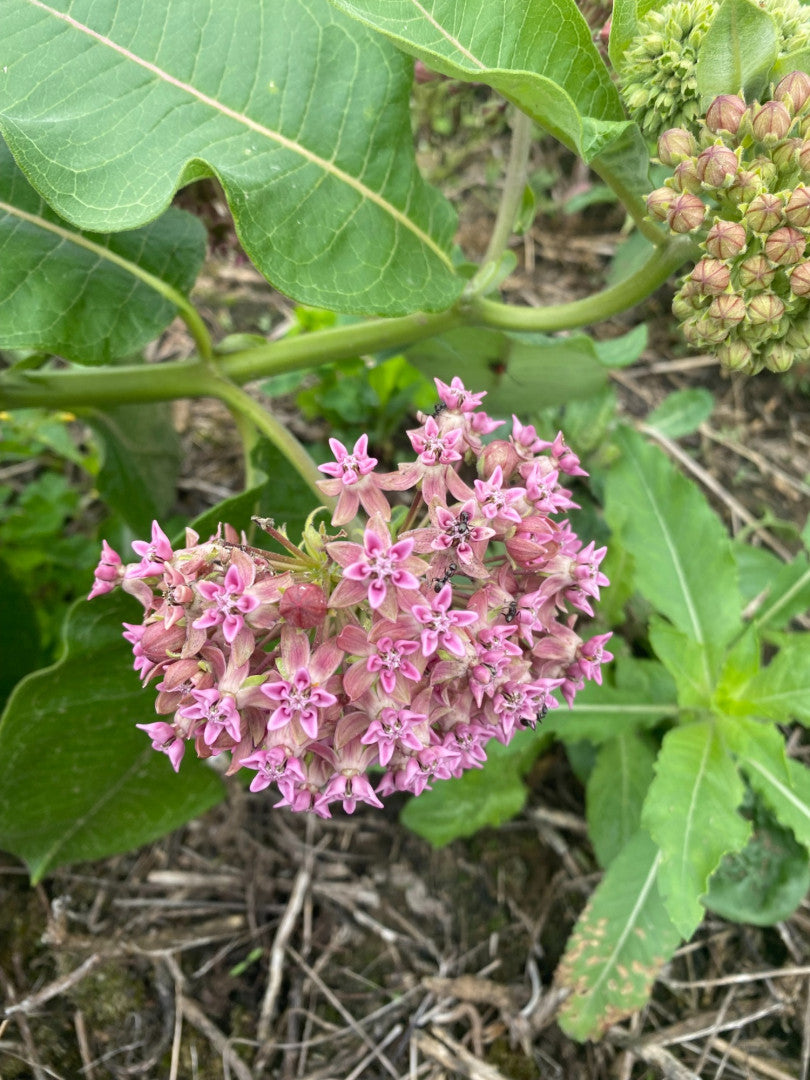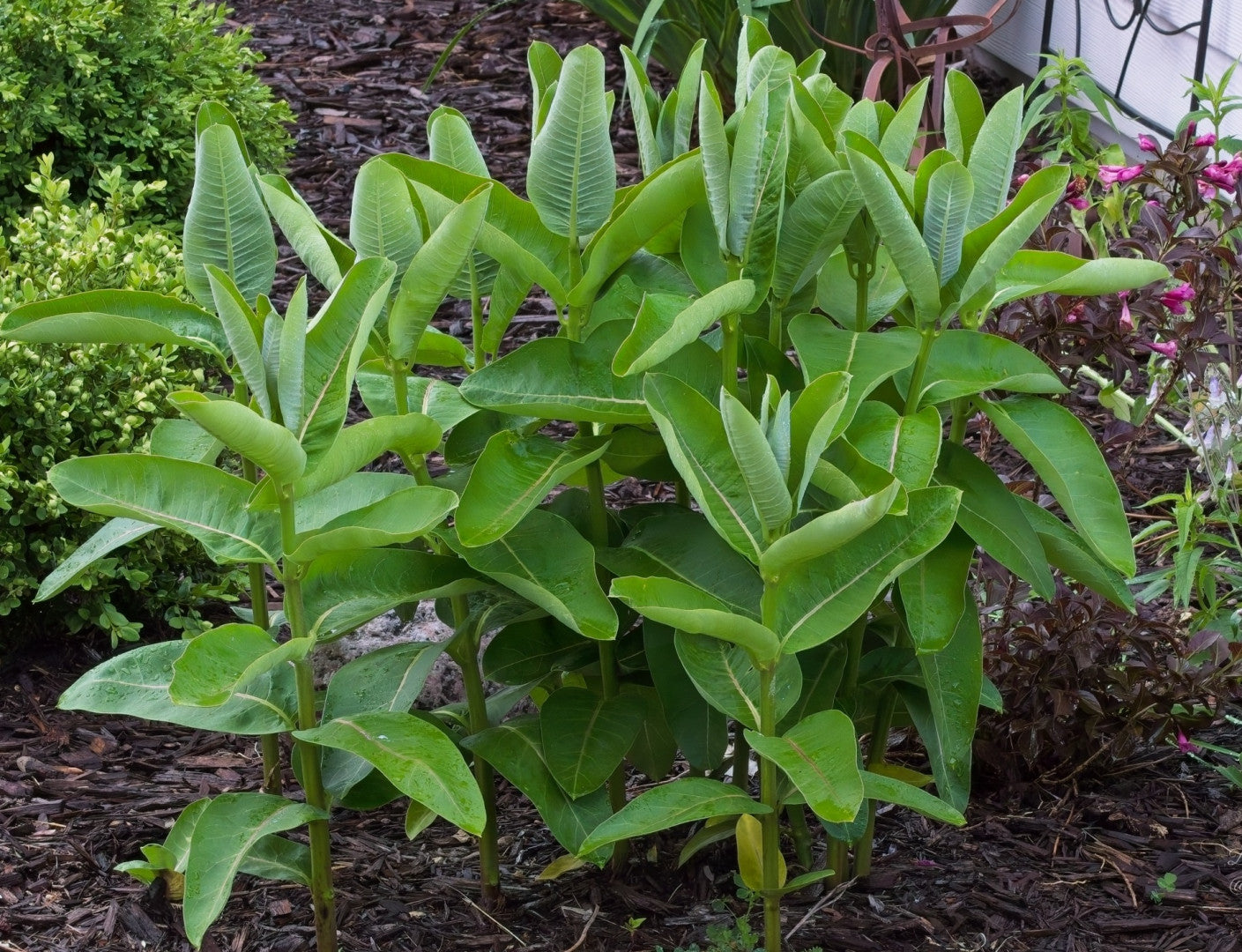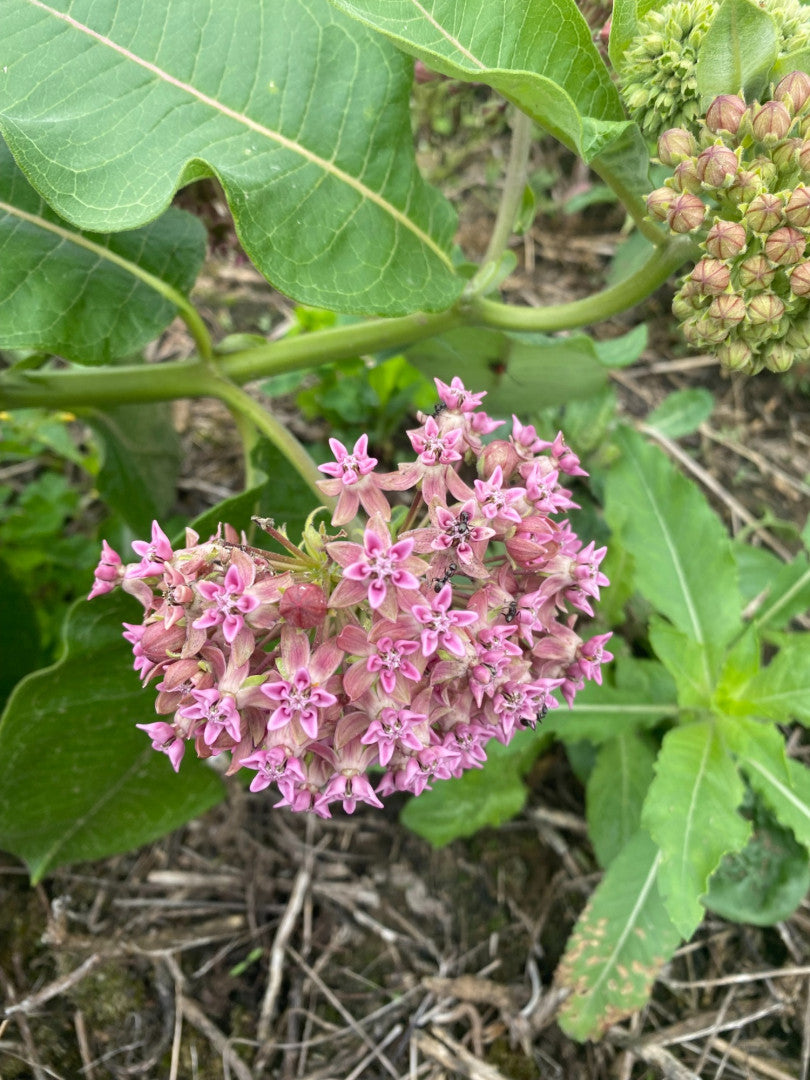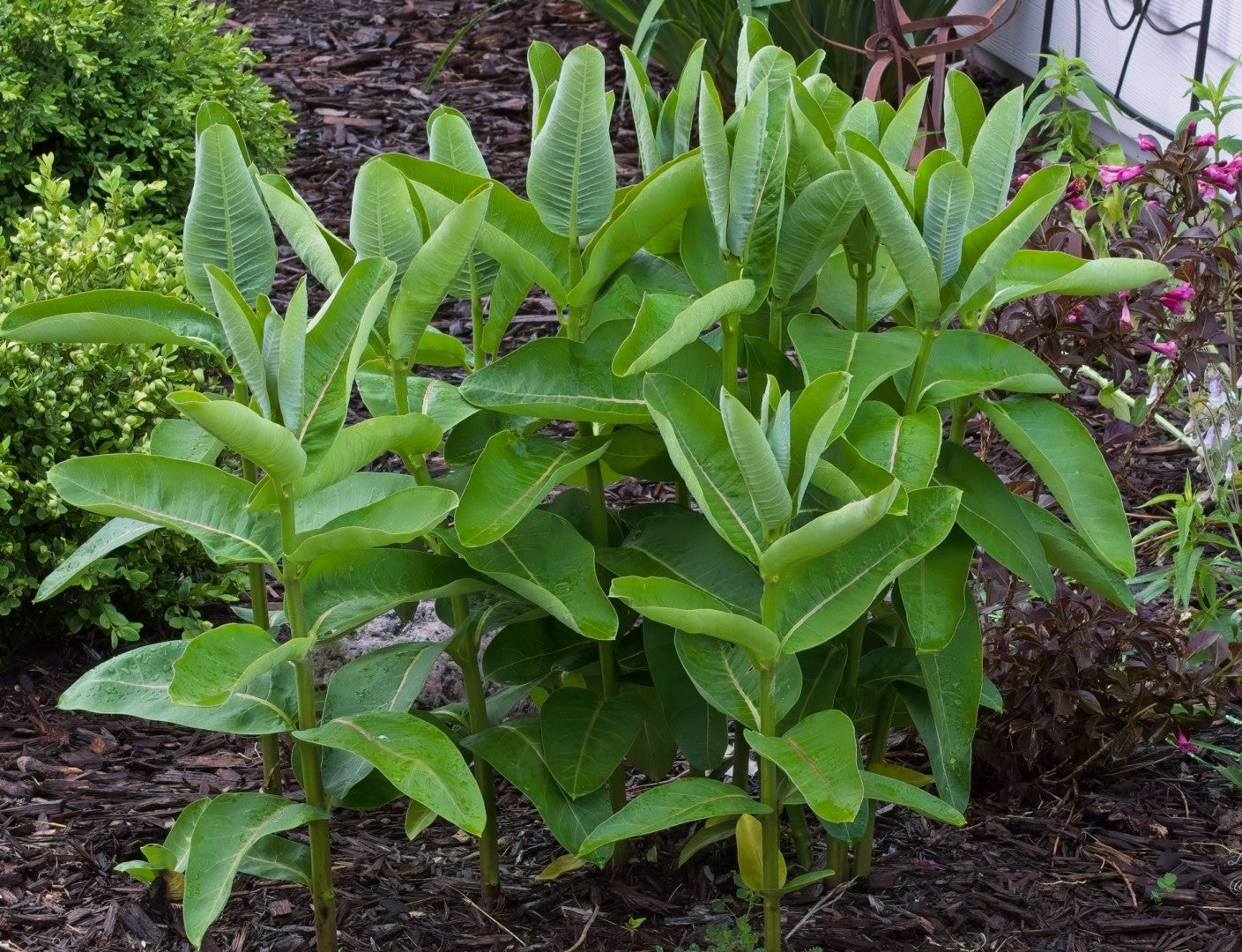About This Plant
Asclepias syriaca, or Common Milkweed, is a powerhouse of ecological significance and natural beauty. This robust perennial grows 3–5 feet tall and produces clusters of fragrant, pinkish-purple flowers from mid to late summer. Thriving in full sun and medium to dry soils, Common Milkweed is a resilient species often established in fields, roadsides, and prairie gardens.
Common milkweed is a vital host plant for monarch butterflies and essential for their life cycle. It provides a nursery for caterpillars and nectar for adult butterflies. Its blooms also attract a wide range of native bees, wasps, and other pollinators, making it a keystone species in pollinator conservation.
Historically, its uses extended far beyond its ecological role. Native Americans and early settlers harvested its fibrous stems for cordage. During World War II, its seed floss was even used as a buoyant material in life vests.
Common Milkweed’s towering presence and captivating blooms make it a bold addition to any garden or restoration project. Its ability to self-seed and naturalize ensures a long-lasting impact. At the same time, its deep taproot makes it drought-tolerant once established. Asclepias syriaca is not just a plant—it symbolizes resilience, biodiversity, and the enduring connection between flora, fauna, and people.




